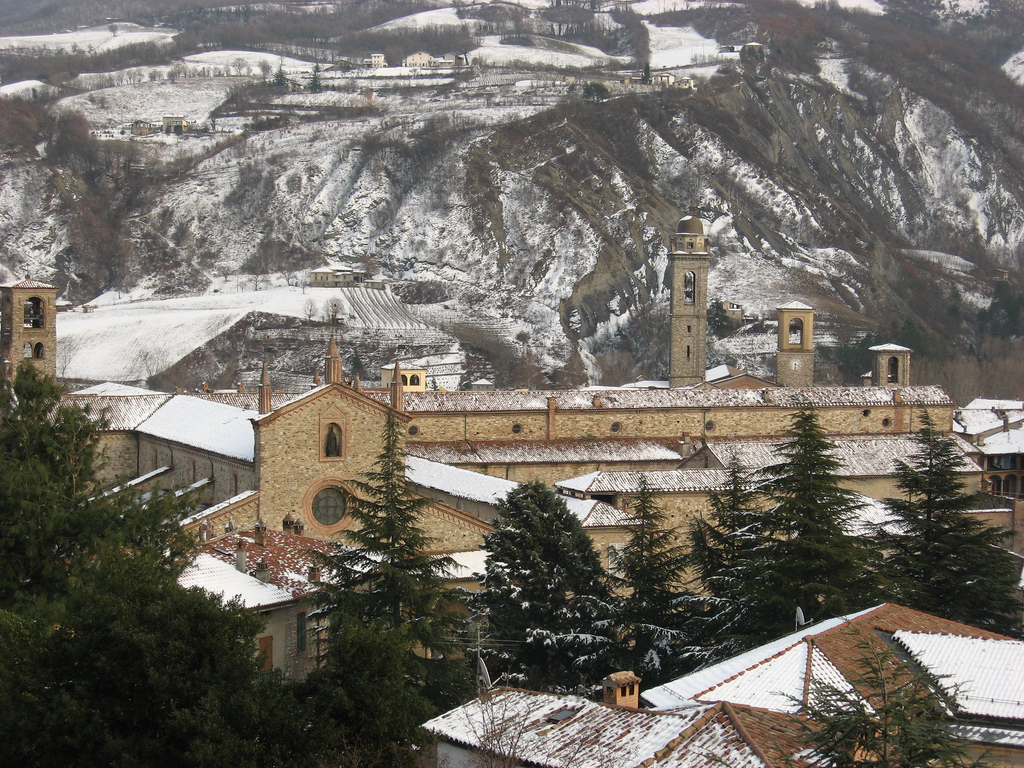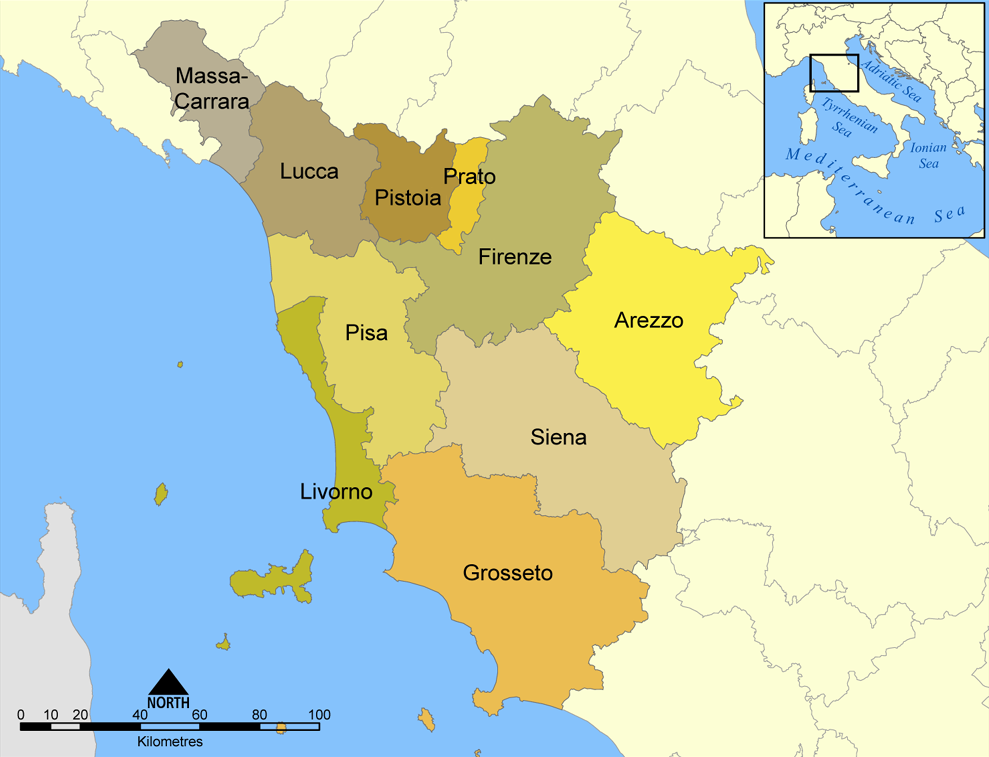Colombana Nera on:
[Wikipedia]
[Google]
[Amazon]
Colombana nera is a red
 Ampelographers believe that first mention of Colombana nera was likely in the posthumous work of the Italian
Ampelographers believe that first mention of Colombana nera was likely in the posthumous work of the Italian
 In 2000, there were 172
In 2000, there were 172
Colombana nera
'' Accessed: April 30th, 2013
Italian wine
Italian wine () is produced in every region of Italy. Italy is the country with the widest variety of indigenous grapevine in the world, with an area of under vineyard cultivation, as well as the List of wine-producing regions#Countries, world's ...
grape variety
This list of grape varieties includes cultivated grapes, whether used for wine, or eating as a table grape, fresh or dried (raisin, Zante currant, currant, sultana (grape), sultana). For a complete list of all grape species, including those unimp ...
that is grown in Emilia-Romagna
Emilia-Romagna (, , both , ; or ; ) is an Regions of Italy, administrative region of northern Italy, comprising the historical regions of Emilia (region), Emilia and Romagna. Its capital is Bologna. It has an area of , and a population of 4.4 m ...
and Tuscany
Tuscany ( ; ) is a Regions of Italy, region in central Italy with an area of about and a population of 3,660,834 inhabitants as of 2025. The capital city is Florence.
Tuscany is known for its landscapes, history, artistic legacy, and its in ...
. Despite similarities in name, the grape did not get its name from nor is it grown in the San Colombano al Lambro
San Colombano al Lambro (Western Lombard dialects, Lodigiano: ) is a ''comune'' (municipality) in the Metropolitan City of Milan, in the Italy, Italian region of Lombardy, located about southeast of Milan.
San Colombano al Lambro is an exclave o ...
region of Lombardy
The Lombardy Region (; ) is an administrative regions of Italy, region of Italy that covers ; it is located in northern Italy and has a population of about 10 million people, constituting more than one-sixth of Italy's population. Lombardy is ...
nor is it permitted in the ''Denominazione di origine controllata
The following four classification of wine, classifications of wine constitute the Italy, Italian system of labelling and legally protecting Italian wine:
* ''Denominazione di origine'' (DO, rarely used; ; 'designation of origin');
* ''Indicazione ...
'' (DOC) wine of the same name. Rather, ampelographer
Ampelography ( ἄμπελος, "vine" + γράφος, "writing") is the field of botany concerned with the identification and classification of grapevines, ''Vitis'' spp. Traditionally this has been done by comparing the shape and colour of th ...
s believe that Colombana nera is named after the Abbey of San Colombano located in the commune of Bobbio
Bobbio (Emilian language#Dialects, Bobbiese: ; ; ) is a small town and ''comune'' in the province of Piacenza in Emilia-Romagna, northern Italy. It is located in the Trebbia River valley southwest of the town Piacenza. There is also an abbey and a ...
in the Piacenza province of Emilia-Romagna where the grape has had a long history of cultivation.J. Robinson, J. Harding and J. Vouillamoz ''Wine Grapes - A complete guide to 1,368 vine varieties, including their origins and flavours'' pg 257 Allen Lane 2012
History
 Ampelographers believe that first mention of Colombana nera was likely in the posthumous work of the Italian
Ampelographers believe that first mention of Colombana nera was likely in the posthumous work of the Italian viticulturist
Viticulture (, "vine-growing"), viniculture (, "wine-growing"), or winegrowing is the cultivation and harvesting of grapes. It is a branch of the science of horticulture. While the native territory of ''Vitis vinifera'', the common grape vine, ...
Giovan Vettorio Soderini that described a grape known as ''San Colombane'' growing in Tuscany and Emilia-Romagna in 1600. That early synonym and the grape's current name is believed to be taken from the Abbey of San Colombano in Bobbio where Colombana nera has a long history of being grown.
The exact origin of Colombana nera is unknown but DNA evidence
Deoxyribonucleic acid (; DNA) is a polymer composed of two polynucleotide chains that coil around each other to form a double helix. The polymer carries genetic instructions for the development, functioning, growth and reproduction of al ...
showing a parent-offspring relationship between the grape and the old Tuscan wine grape Mammolo suggest that Tuscany may be the variety's homeland.
Viticulture and relationship to other grapes
Colombana nera is a late ripening grape variety that can be very vigorous and high yielding if not kept in check by winterpruning
Pruning is the selective removal of certain parts of a plant, such as branches, buds, or roots.
It is practiced in horticulture (especially fruit tree pruning), arboriculture, and silviculture.
The practice entails the targeted removal of di ...
and green harvesting.
In the early 20th century, DNA profiling found a link between Colombana nera and another Tuscan wine grape, Mammolo. The evidence suggest that Mammolo is one of the parent varieties of Colombana nera which would make the grape a sibling to Pollera nera
Pollera nera is a red Italian wine grape variety that is grown primarily in the Liguria wine region and northwest Tuscany. Ampelographers believe that the vine has a very long winemaking history but it is rarely seen today.J. Robinson ''Jancis Rob ...
, Caloria and Biancone di Portoferraio.
Wine regions
 In 2000, there were 172
In 2000, there were 172 hectare
The hectare (; SI symbol: ha) is a non-SI metric unit of area equal to a square with 100-metre sides (1 hm2), that is, square metres (), and is primarily used in the measurement of land. There are 100 hectares in one square kilometre. ...
s (425 acres) of Colombana nera growing in Italy. In Emilia-Romagna it is found mostly in the province of Piacena while in Tuscany it can be found in the provinces of Livorno
Livorno () is a port city on the Ligurian Sea on the western coast of the Tuscany region of Italy. It is the capital of the Province of Livorno, having a population of 152,916 residents as of 2025. It is traditionally known in English as Leghorn ...
, Lucca
Città di Lucca ( ; ) is a city and ''comune'' in Tuscany, Central Italy, on the Serchio River, in a fertile plain near the Ligurian Sea. The city has a population of about 89,000, while its Province of Lucca, province has a population of 383,9 ...
, Massa-Carrara
The province of Massa-Carrara () is a Provinces of Italy, province in the Tuscany region of Italy. It is named after the provincial capital Massa, Tuscany, Massa, and Carrara, the other main town in the province.
History
The province of "Mass ...
, Pisa
Pisa ( ; ) is a city and ''comune'' (municipality) in Tuscany, Central Italy, straddling the Arno just before it empties into the Ligurian Sea. It is the capital city of the Province of Pisa. Although Pisa is known worldwide for the Leaning Tow ...
and Pistoia
Pistoia (; ) is a city and ''comune'' in the Italian region of Tuscany, the capital of a province of the same name, located about north-west of Florence and is crossed by the Ombrone Pistoiese, a tributary of the River Arno. It is a typic ...
. It is used primarily as a blending grape and is a permitted variety in the Colli di Luni DOC
Colli di Luni is an Italian ''Denominazione di origine controllata'' (DOC) located in both Liguria and Tuscany in northwest Italy. The DOC produces both reds and white wines made primarily from Sangiovese and Vermentino with a varietal Verme ...
that includes both northern Tuscany and southeastern Liguria
Liguria (; ; , ) is a Regions of Italy, region of north-western Italy; its Capital city, capital is Genoa. Its territory is crossed by the Alps and the Apennine Mountains, Apennines Mountain chain, mountain range and is roughly coextensive with ...
. Here the grape is permitted up to a maximum of 25% with other local red grape varieties such as Bracciola nera and Vermentino nero
Vermentino nero is a red Italian wine grape variety that is predominantly grown in province of Massa-Carrara in Tuscany (wine), Tuscany. After World War II, the vine was almost lost to extinction until Podere Scurtarola, a producer from Massa, Tus ...
in the predominantly Sangiovese
Sangiovese is a red Italian wine grape variety that derives its name from the Latin , "blood of Jove, Jupiter".
Sangiovese Grosso, used for traditionally powerful and slow maturing red wines, is primarily grown in the central regions of Italy ...
-based (60-70%) wine along with Pollera nera, Canaiolo
Canaiolo (), also called Canaiolo nero or Uva Canina, is a red Italian wine grape grown through Central Italy but is most noted in Tuscany. Other regions with plantings of Canaiolo include Lazio, Marche and Sardegna. In Umbria a white berrie ...
and Ciliegiolo
Ciliegiolo is a variety of red wine grape from Italy, named after the Italian for 'cherry'. It is a minor component of traditional blends such as Chianti, but interest has revived in recent years. In Umbria it is made into a light quaffing wine ...
rounding out the blend.P. Saunders ''Wine Label Language'' pp. 145-146 Firefly Books 2004
Despite similarities in name, the Colombana nera is not grown in the San Colombano al Lambro DOC of Lombardy nor is it permitted in the DOC wine.
Synonyms
Over the years, Colombana nera has been known under a variety of synonyms including: Basgana, Basgana nera, Basgano, Basgnano, Bazano, Bersegano, Besagana, Besegano, Besgano nero, Besgana, Besgano Di San Colombano, Besgano rosso, Bezgano nero, Colombana and Colombano rosso.Vitis International Variety Catalogue
The Vitis International Variety Catalogue (VIVC) is a database of various species and varieties/cultivars of grapevine, the genus ''Vitis''. VIVC is administered by the Geilweilerhof Institute for Grape Breeding (''Institut für Rebenzüchtung G ...
(VIVC) Colombana nera
'' Accessed: April 30th, 2013
References
{{reflist Red wine grape varieties